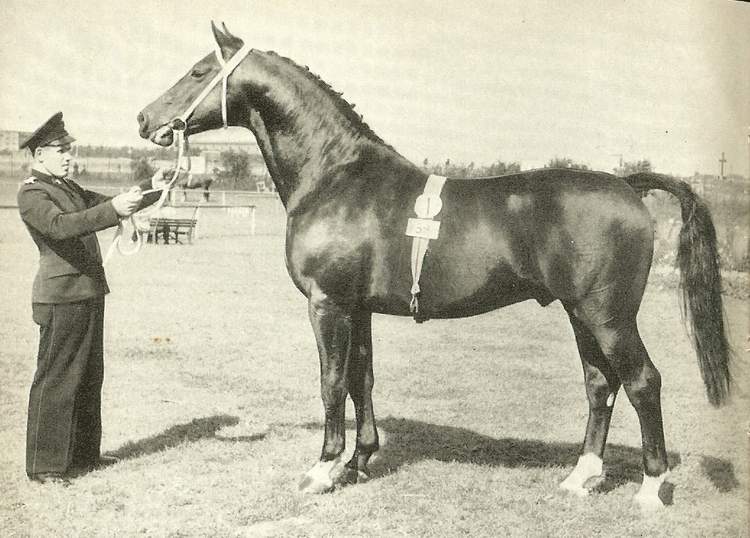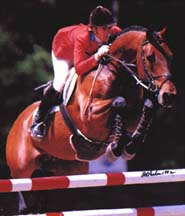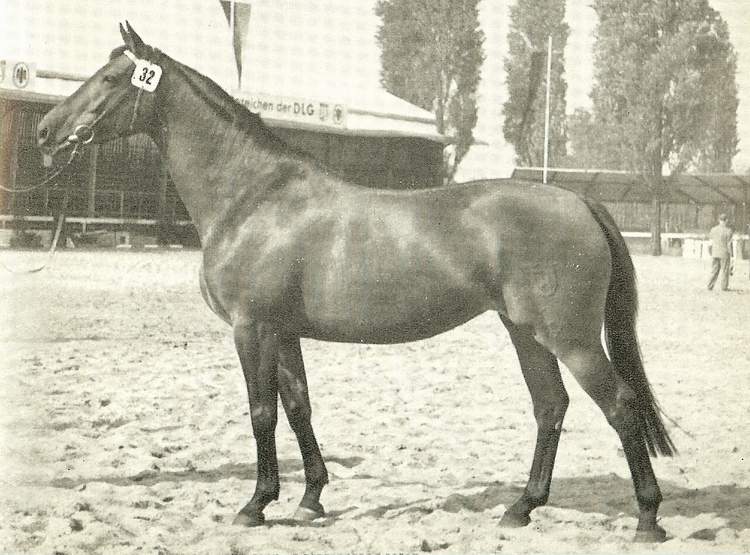

Holstein


Introduction: If you have any comments or suggestions, please click here.
Names: Holstein, Holsteiner. Named after the state in Germany where it originated.
Origin: Bred in marshes of River Elbe, West Germany. A medium-heavy German breed, suitable either for riding, driving, or as a hunter. The original breed was believed to be of Andalusian origin. From about 1825 on, in a "reorientation" of breeding, there was an introduction of the Yorkshire Coach horse along with some half-bred stallions. This reorientation was said to have improved the breed.
Breeding: Breeding area and studs--Germany: Holstein, especially Kremper and Wilster Marsh and Dithmarsh. Breeding is completely in the hands of private farmers. All Holstein horses are registered with the Holsteiner Verband (Holstein Horse Society) and carry the Holstein brand mark. (You may be able to see the brand on the mare below.)

Breeding of Holsteins was already thriving in the early Middle Ages, Spanish stallions being imported after the Reformation. The Holstein is the progenitor of a number of important breeds; founding, for instance, the studs at Dillenburg, Cordoba, etc. With the fall of Schleswig Holstein to Prussia, the Traventhal Stud was set up in 1868, and the breeding of Holsteins, until then in private hands, was reorganized by the Prussian State. Since the Traventhal Stud was closed in 1960, breeding is once more completely under control of the Holstein Breeders' Society. The foundation sires of the Holstein horse of today were the English stallions, Protocol and Burlington Turk imported last century. The most important existing strains are from the sires Adjutant, Achilles, Ethelbert, Amurath, Cicero and Fusilier. Considerable use of Thoroughbreds and East Prussian, quite recently, to produce a more useful riding horse.
Description: Large-framed, vigorous, deep, broad horse. The Holstein horse averages 64.4 inches and 1317 pounds, being slightly larger but of almost identical build to the Hanoverian. It is usually brown, often with white feet.
Body: Long neck well set on with beautiful mane. Strong back, sometimes rather long; muscular loins, well muscled quarters; broad chest, quite deep. Usually well-built shoulders. Excellent barrel, with ample back ribs.
Color: Usually brown, bay or black. From light to dark brown; also grey and, less frequently, chestnut.
Head: Often slightly Roman-nosed, expressive, with lively eyes. Large nostrils and twitching ears.
Legs: Good, with solid, clean tendons and joints.
Size: 16-16.2 hands. 16.2 to 17.2 hands.
Temperament: Good manners. Perfect temperament and character.
Features: Big and strong.
Uses: Good carriage horse and show jumper. The heavier Swiss Holsteins are also used extensively for farm work. For centuries, Germany's all-purpose horse. Originally a light, yet strong and active coach horse. Also suitable as a riding horse, the Holstein has in recent years proved itself to be a highly capable jumper, and as a result of improvement with Thoroughbred and East Prussian blood it is now nearer to the true riding horse, as represented by the Hanoverian and East Prussian.
Accomplishments:
Curiosities:
Profiles:
Conclusion: Another, lesser-quality copy of the photo I have at the top-left of this page says: "It may well be that in all the world there is no other horse which can equal the beauty and excellence of the Holsteiner." (Clarke, 1799.) While this is certainly a matter of opinion, I think it does justice to this amazing breed, as well as to its fellow equines in general.